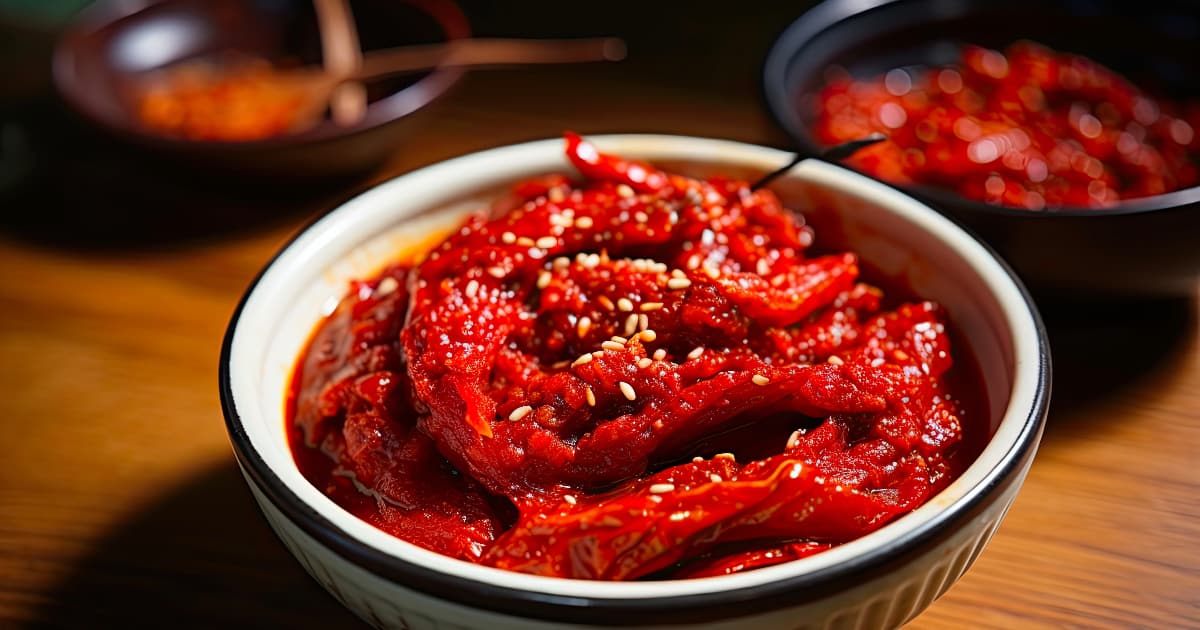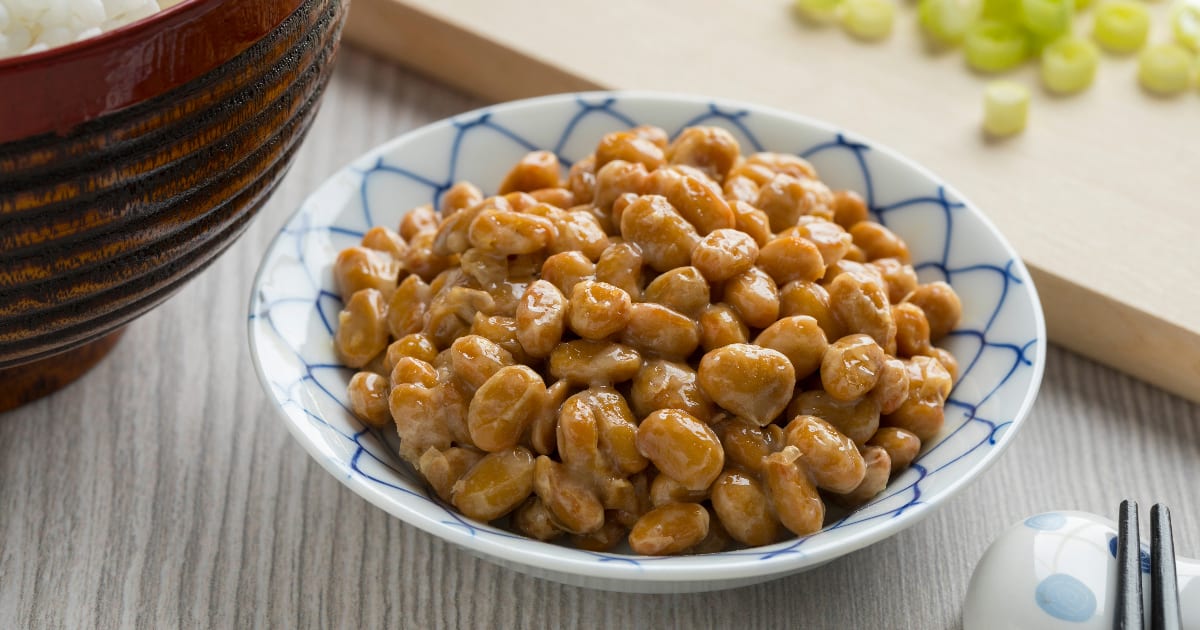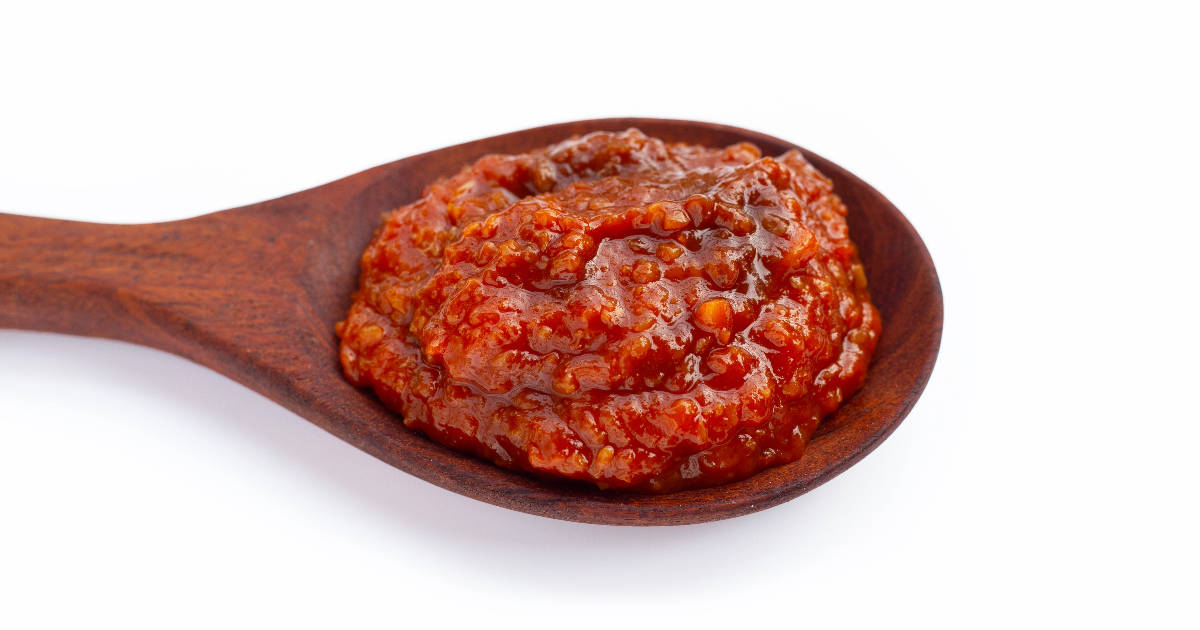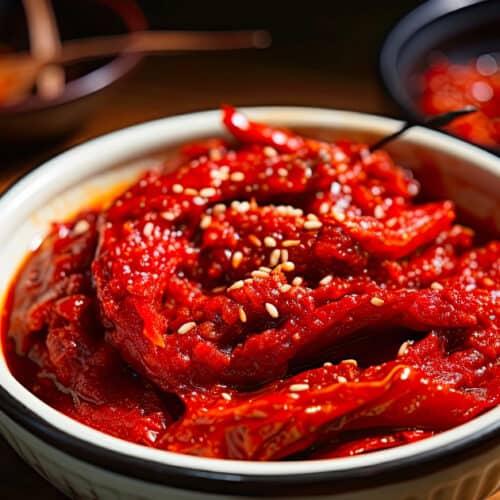Gochujang is a beloved Korean condiment made from sticky rice, fermented soybeans, and chili peppers. This thick, pungent paste lends a distinctive sweet, spicy, and umami flavor to many classic Korean dishes. While gochujang has its roots in traditional Korean cuisine, its complex savory-spicy taste profile has made it increasingly popular worldwide.

Gochujang sauce brings the addictive flavor of gochujang to sauces, marinades, dressings, and dips. With just a few simple ingredients, you can make your own flavor-packed gochujang sauce at home. This versatile sauce adds a kick of spice and layers of flavor to everything it touches.
Understanding Gochujang

To understand gochujang sauce, it helps to first understand gochujang itself. This thick, red condiment has been a staple of Korean cooking for centuries. Traditional gochujang contains four key ingredients:
- Chili peppers - Usually Korean red chili powder, which lends spice and rich color.
- Glutinous rice - Provides stickiness and soft sweetness.
- Fermented soybeans - Adds a savory, umami depth.
- Salt - For preservation and flavor enhancement.
Additional ingredients like sweeteners may be included, but those four form the base of authentic gochujang.
This winning combination of spicy, sweet, salty, and umami makes gochujang extremely versatile. Koreans use it in everything from bibimbap to stews to marinades. A little bit of gochujang packs a flavor punch.
Crafting Gochujang Sauce

While gochujang shines on its own, mixing it with complementary ingredients transforms it into a complex sauce. Gochujang sauce recipes build on the fermented chili paste, balancing and enhancing its flavor.
Most gochujang sauces include these elements:
- Gochujang - Of course! This spicy paste forms the base.
- Acid - Rice vinegar or lime juice brightens up the sauce.
- Sweetener - Sugar, honey, or maple syrup balances the heat.
- Umami - Soy sauce, miso, or mirin adds a savory note.
- Flavorings - Garlic, ginger, sesame, and green onion enrich the sauce.
By blending gochujang with acid, sweetness, and extra flavor, you create a sauce that sings. The ingredients come together to form a syrupy, clingy sauce ideal for drizzling, dipping, and dunking.
Putting Gochujang Sauce to Work
A good gochujang sauce recipe should leave your taste buds tingling. Once you've made this Korean condiment, it's time to put it to work!
Here are some delicious ways to use gochujang sauce:
Bibimbap Topping
No Korean mixed rice bowl is complete without a good drizzle of gochujang sauce. The spicy condiment melds all the ingredients together.
Chicken Marinade
Let chicken thighs or drumsticks soak up the flavor of gochujang sauce before grilling or baking. It'll add sweet heat to every bite.
Stir Fry Sauce
Stir a spoonful of gochujang sauce into any meat or veggie stir fry. It nicely glazes the ingredients.
Dipping Sauce
Thin it with a splash of rice vinegar and use it as a spicy dip for dumplings, spring rolls, or tempura.
Grilled Protein Glaze
Brush gochujang sauce over chicken, pork, beef, shrimp, salmon, or tofu on the grill for next-level flavor.
Sandwich Spread
Mix gochujang sauce into mayo or cream cheese. Spread it on a sandwich for a flavor blast in each bite.
With a bottle of gochujang sauce in the fridge, the possibilities are endless!
Crafting Your Own Gochujang Sauce
Once you've tasted the magic of gochujang sauce, you'll want to make your own at home. Luckily, it only takes 5 minutes and 5 simple ingredients:
Gochujang paste - For that essential Korean chili flavor.
Rice vinegar - Adds a bright acidic note.
Toasted sesame oil - Provides nutty richness.
Maple syrup - Balances the heat with sweetness.
Minced garlic - Pumps up the flavor.
Just combine everything in a bowl and whisk until smooth. Then taste and adjust until you achieve the perfect spicy-tangy-sweet balance.
This basic blend of components lets the flavor of the gochujang shine. Once you have the technique down, experiment with mix-ins like ginger, green onion, soy sauce, and chili flakes.
Getting Creative with Gochujang
Now that you've made your own gochujang sauce, get ready to drizzle it over everything! Beyond traditional Korean recipes, this punchy sauce can add heat and excitement to all kinds of dishes:
- Coat chicken wings with gochujang sauce for lip-smacking Korean-style wings.
- Make a spicy gochujang mayo to slap on a burger or sandwich.
- Whip up a batch of gochujang pasta by tossing cooked noodles with the sauce.
- Use it as a spicy salad dressing for crisp veggies or cold noodles.
- Add it to your next stir fry for a wonderful sticky glaze.
- Brush it over grilled eggplant or zucchini for a flavor upgrade.
With its addictive sweet-spicy taste, the possibilities are endless for gochujang sauce recipes. This simple Korean condiment can seriously upgrade your cooking!
FAQs
Is gochujang spicy?
Gochujang has moderate spice. Look for "hot" on the label for an extra kick.
Where can I find gochujang paste?
Check major grocery stores, and Asian markets, or order online.
How long does gochujang sauce keep?
About 2 weeks refrigerated or 2-3 months frozen.
Can I substitute sriracha for gochujang?
Not really - Sriracha lacks the complex sweetness and fermented taste.
Is gochujang sauce gluten-free?
Many brands contain wheat, so check labels if gluten-free is needed.
Is gochujang vegan?
Traditionally yes, but check labels for any non-vegan additions.
Conclusion
For those craving big, bold Korean flavor, gochujang sauce hits the spot. With its spicy kick balanced by sweet and tangy notes, gochujang sauce livens up everything it touches.
Best of all, you can easily blend up your own customized version at home in just minutes.

Gochujang Korean Sauce
Ingredients
- 1/4 cup gochujang paste
- 2 tablespoons rice vinegar
- 1 tablespoon toasted sesame oil
- 1 tablespoon maple syrup
- 3 cloves garlic, minced
Instructions
- Add the gochujang paste, rice vinegar, sesame oil, maple syrup and minced garlic to a small bowl.
- Whisk all the ingredients together until fully combined and smooth.
- Taste the sauce and adjust flavors as needed. Add more gochujang for extra spice, more vinegar for extra tang, or more maple syrup for extra sweetness.
- Use the gochujang sauce as a condiment for bibimbap, a sauce for stir fries, a marinade for meats, or a dipping sauce for dumplings.
- Store leftover sauce in an airtight container in the refrigerator for up to 2 weeks.
Notes
- Look for gochujang paste at Asian grocery stores or in the Asian foods aisle of well-stocked supermarkets.
- For spicier gochujang sauce, use a brand marked "hot" or add chili flakes or sriracha.
- For extra flavor, add minced ginger or green onions to the sauce.
- Thin the sauce with water or broth if needed for use as a dressing or marinade.
- Try using the sauce to coat chicken wings before baking for Korean-style wings.
- Mix the sauce into mayonnaise for a quick spicy sandwich spread.

